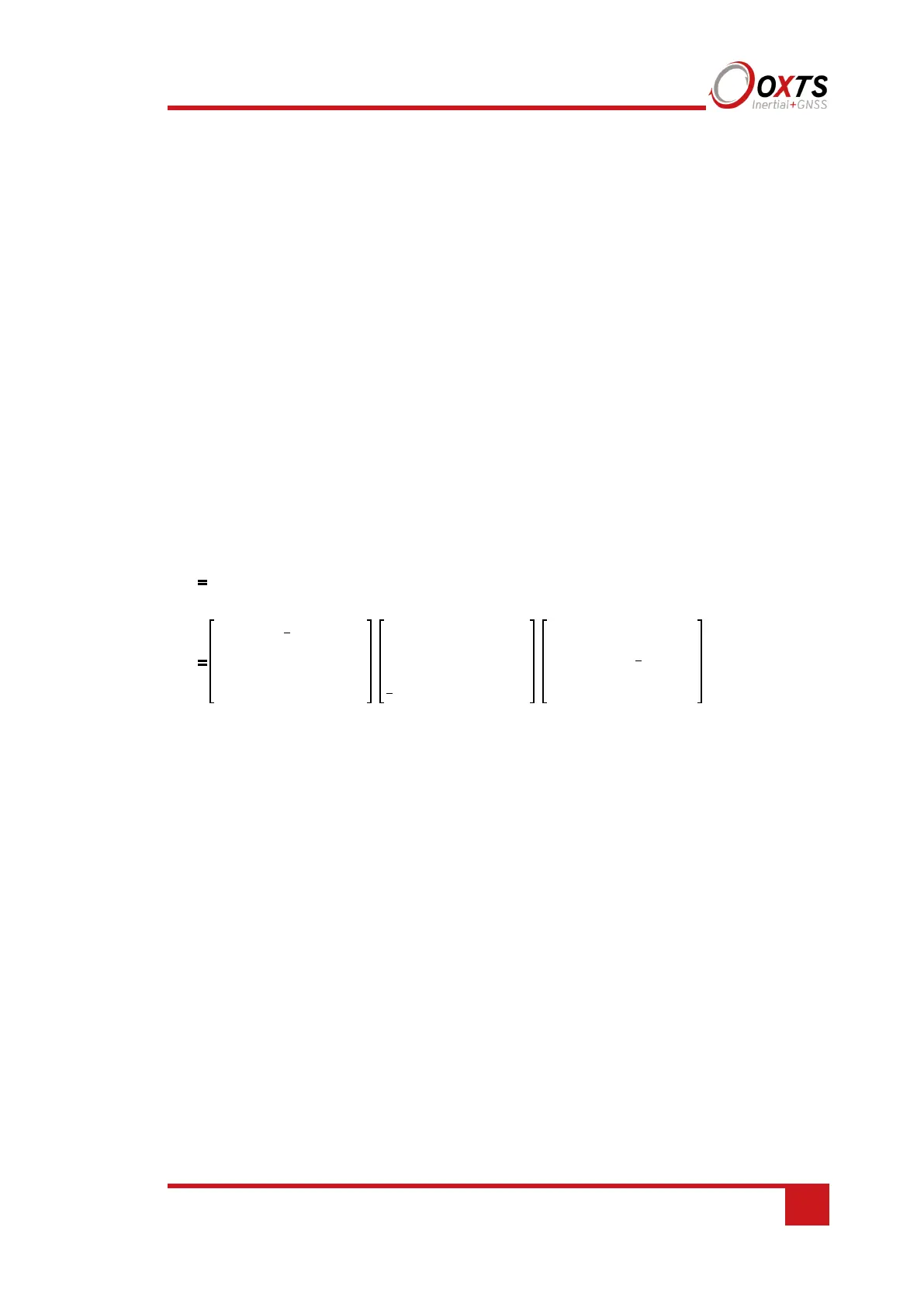107
Using the orientation measurements
This section has been provided to clarify the definitions of heading, pitch and roll that
are output by the RT.
The RT uses quaternions internally to avoid the problems of singularities and to minimise
numerical drift on the attitude integration. Euler angles are used to output the heading,
pitch and roll, and these have singularities at two orientations. The RT has rules to avoid
problems when operating close to the singularities; if you regenerate the rotation matrices
given below then they will be correct.
The Euler angles output are three consecutive rotations (first heading, then pitch and
finally roll) that transform a vector measured in the navigation co-ordinate frame to the
body co-ordinate frame. The navigation co-ordinate frame is the orientation on the earth
at your current location with axes of north, east and down.
If is vector measured in the navigation co-ordinate frame and is the same
vector measured in the body co-ordinate frame the two vectors are related by:
where:
is the heading angle;
is the pitch angle and
is the roll angle.
Remember—heading, pitch and roll are usually output in degrees, but the functions sin
and cos require these values in radians.
V
n
sin ψ( )
cos ψ( )
0
0
0
θ
0
1
0
0
θ
.
0
0
cos φ( )
φ
sin φ( )
φ
.
V
b
.
